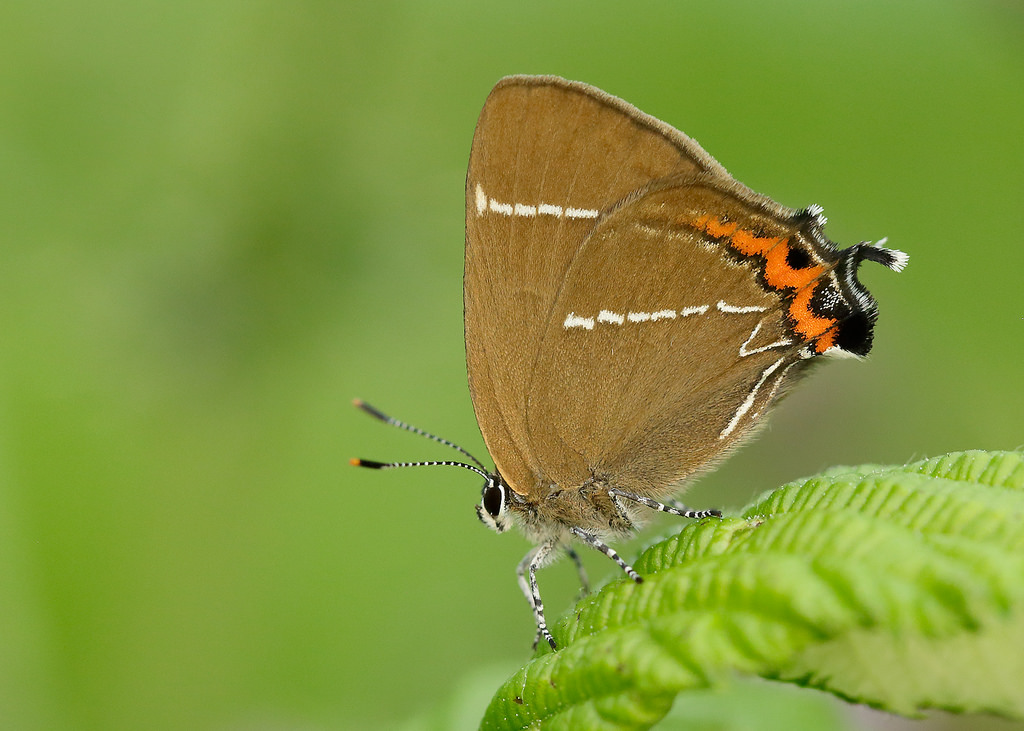Butterfly Conservation (BC) opposes Sheffield City Council and Amey’s plans for large-scale felling as a means of managing street trees and specifically opposes the felling and excessive pruning of the Chelsea Road Elm.
The White-letter Hairstreak is one of the UK’s most threatened butterflies, having undergone a 96% decline in numbers between 1976 and 2014, so the loss of any colony is of concern. The butterfly breeds on elms and its decline is directly linked to the loss of trees to Dutch Elm Disease. Any elms which are disease-resistant are therefore particularly important in helping maintain the long-term presence of the butterfly in an area.
Sheffield City Council’s private finance initiative with Amey and subsequent decision to fell large numbers of mature street trees in the city and replace them with young trees as part of their road maintenance programme, has led to a long-running dispute with protestors, and concern amongst wildlife organisations and the general public.
The council argue this felling is needed because those trees are diseased or dangerous. The latest potential victim is a disease-resistant Huntingdon Elm, known as the Chelsea Road Elm, which supports a White-letter Hairstreak population. The tree is so well-known it came runner-up in a Woodland Trust ‘Tree of the Year’ poll.
The Huntingdon Elm is a unique specimen and it is BC’s belief that the tree should be retained and we have made our position clear to Sheffield City Council.
A number of mitigation measures have been proposed by Sheffield City Council to which we have responded. This should not be interpreted as BC supporting that mitigation strategy as none would be needed were the tree to be retained. Additionally we know of no examples whereby the loss of such a significant tree and its associated butterfly population and other invertebrate fauna has been successfully mitigated, so our responses do not imply that the proposed mitigation will succeed.
Although Sheffield City Council has now agreed not to fell the tree, the plan to undertake canopy reduction is now at the centre of more controversy. When this was first proposed BC made it clear that we had no evidence that White-letter Hairstreak breeds upon non-flowering elms, even some observers report that the species is occasionally seen in the canopies of non-flowering specimens. So if the canopy of the Chelsea Road Elm is reduced as part of a manged decline then sufficient canopy should be retained to ensure that the tree’s flowering status continues. If this is not done then the risk of losing the butterfly from the tree is likely to be further increased. Even then, the likelihood is that even a managed decline will risk the loss of the butterfly from the tree.
If pruning is unavoidable then plans to search any pruned branches for White-letter Hairstreak eggs and to translocate them to nearby trees is worth a try. Whether such a measure would succeed is debatable. Also the eggs are hard to find and we believe that a thorough inspection of all branches removed from the tree is not a realistic proposition, unless only a very small quantity of material is involved.
On a more positive note BC welcomes the decision to clone the elm in order to plant more disease-resistant trees around the city. Such cloned trees could provide additional suitable habitat in the future. This will only happen if the butterfly population on the Huntingdon Elm and other elms in the city are not lost in the meantime. Given the fact that it may take two decades for planted elms to grow to a size acceptable to the butterfly, a minimum 20 year monitoring period will be required to assess the effectiveness of this mitigation measure.
Follow Dr Sam Ellis on Twitter @SamEllisBC


